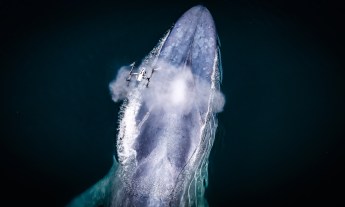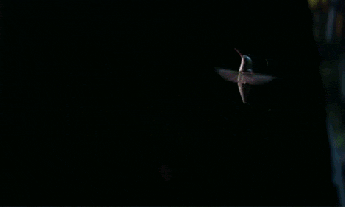Daniel Suarez’s novel Kill Decision features a scientist, Laura McKinney, whose work studying ants is purloined by bad guys wanting to use her research to create an automated drone army. It’s pretty terrifying; here’s an excerpt.
McKinney gestured to the covered object in the center of the table. “What’s in the sack?”
“Something you should see. I didn’t want to alarm you until you were better.”
“I’ve been alarmed ever since I met you.”
“Okay, then…” He unfolded the burlap to reveal one of the black weaver-drone quadracopters that had attacked them in Colorado.
A slightly irrational fear gripped her. It was clearly dead — damaged and missing half its rotors. As a scientist, irrational fears made her angry, so she tamped it down and leaned forward to look at the drone.
The core of it looked mostly intact, although none of the rotors at its four corners was still whole. The spike-like metal feet protruded menacingly, sharpened like metal thorns.
“We managed to reconstruct this one by cannibalizing parts from the two that got into the plane cabin.” He picked up the lightweight device. “It wasn’t difficult. I get the feeling these were meant to be assembled by semiskilled workers. They’re modular, cheap. Mostly dual-use off-the-shelf parts. Circuit boards. Memory chips. Batteries. Optical sensors.”
She extended her hand, and he passed the dead drone to her. McKinney’s curiosity had already bested her anxiety, and she peered into its recesses, rotating it around. The broken propellers flopped around at the ends of wires. Her nose caught the peppery scent she remembered from the Colorado swarm. “There’s that smell again. Like cayenne pepper. I’d like to know the chemical composition.”
Odin nodded. “Mouse knows a few local chemists. Ex-cartel people. I’ll see if he can get it analyzed.”
She kept sniffing and traced it to nozzles next to a row of silvery capsules in the frame. They looked like the nitrous oxide cartridges used for whipped cream or the CO2 propellant in paintball guns.
“Four capsules. Like the chemical glands of a weaver. Mixing them in varying proportions to communicate different messages. That would match ant behavior. It’s how they lay down a pheromone matrix.”
“So they were leaving a trail.”
“It’s probably how they incite each other to attack. Each new arrival at a scene reinforces the attack message by spraying more pheromone. But that also means they’d need some way to read each other’s chemical pheromones.”
“Like an electronic nose.”
“Right.” McKinney ran her finger along one of four forward-facing wire antennas that were studded with tiny microchips.
Odin peered closely right next to her.
“Weaver ants — ants in general, actually–have dozens of sensilla on their antennas. They detect all sorts of things, chemical traces, heat, humidity. If these devices are running my weaver model, then they’d respond to numeric pheromonal input values. It’s virtual in my simulations, but here it could be a concentration measurement received from a hardware sensor. Weavers also transmit information to each other by touch, vibration.” She ran her fingers along each antenna, noting half a dozen small nodules.
“They transmit data to each other physically as well?”
McKinney nodded. “It allows them to move information through the swarm separate of the pheromones.”
“And we wouldn’t be able to jam that communication with radio countermeasures either.”
“I suppose that’s true of both the chemical and touch communication. But also, I was wondering how they found us — how they detected we were in the house, and where.”
“I was wondering about that too. These stupid little bots outperformed any system I’ve ever seen. We were wearing cool suits to hide our thermal signature and AD armor to conceal our human shape and faces. That fooled the sniper stations in the hills, but not these bastards. I was thinking maybe they reacted to noise or movement.”
McKinney shook her head.
“If they’re using the weaver model I created, they’d focus on organic compound sensors. Ants have receptors in their antennas that help them identify food. Maybe –”
“You’re saying they smelled us?”
“Or tasted us.” She sighed. “I know it sounds silly, but that’s part of what weavers do when they swarm. They detect food sources by trace chemicals — in much the same way as they read each other’s pheromone messages.”
Odin seemed to be contemplating something. “It doesn’t sound silly at all, in fact.”
“What?”
“There’s a technology — well known in counterterrorism work; used by customs and Homeland Security. It’s called C-Scout MAS. We used it while hunting for high-value insurgent targets.”
She examined one of the dead drone’s antennas. “I don’t know it.”
“It’s an electronic nose that sniffs the air to detect human presence. Apparently there are fifteen chemicals that indicate human presence by the breath we exhale — things like acetone, pentane, hexane, isoprene, benzene, heptane, alpha pinene. You get the idea. They appear in a specific ratio wherever people are breathing — the more concentrated it is, the closer people are or the more people there are.”
“You’re saying this technology is currently in use?”
“The detectors were on a microchip.”
She manipulated the articulated antennas on the dead drone. “Then maybe these drones find people in their vicinity by the gases we exhale — just like weavers would detect food. That would actually work well with my model. They could be coded to identify whatever they’re hunting by chemical signature — moving toward greater concentrations of the target scent and away from decreasing concentrations. That relatively simple algorithm is how my model works, and it manifests itself as complex hunting behavior when scaled up to a swarm of stigmergic agents. We were breathing fast. Keyed up. We must have seemed like glowing neon signs to these things.”
McKinney was already looking more closely at the drone’s innards.
The drone had an aluminum tube frame, in the center of which was a wire box acting as ribs protecting the core. There was a stack of computer boards there, vision sensors all around, thin antennas — both leading and trailing — and wiring. Then along both sides were what looked to be steel cylinders — four in all.
Odin tapped them. “Zip guns. These were thirty-eights. They slide in on tracks, so it looks like they can have various weapon loads. The other one had .410 shotgun shells.”
“They’re flying handguns.”
“Dirt-cheap, highly inaccurate guns — but effective enough in close quarters.”
She examined what looked to be ports in the back. Charging sockets? There were also LED lights, all dead, but curious nonetheless. “If these run on my model, an appropriate number of workers would be ‘feeding’ the others. With weavers they pass along honeydew — liquid food. Here, they probably pass along electricity, battery power. There seem to be electromechanical analogs for all the inputs and outputs of weaver swarm intelligence manifested in these things.”
She tossed it back onto the table in disgust. “But it looks like a toy. An evil toy designed by some sick, twisted –”
“Those ‘toys’ nearly killed all of us, and if we hadn’t escaped, they would have. Lalenia pulled ten bullets out of our team, and that’s with body armor on.” He rewrapped the drone in its burlap shroud. “These things could be churned out of just about any contract factory in the industrialized world. Shipped anywhere by the thousands — just like toys.”
She looked up at him. “Oh, it’s worse than that. Those inputs and outputs — the stimuli and the response — they can take just about any morphology. These zip guns could just as easily be missiles. Those tiny rotors just as easily jet turbines.”
He narrowed his eyes at her.
“Ants are what’s called a polymorphic species–they have various caste groups that can differ widely in size. For example, Pheidologeton diversus — the marauder ant — has supermajor warriors that are five hundred times the mass of one of their minor workers. And yet they are the same species and operate with the same brain — and belong to the same colony.”
“You’re saying these things could be easily scaled up using the same software brain.”
She gestured to the dead drone on the table. “I’m saying this might just have been a low-cost test version. A prototype. They could easily be made bigger.”
He contemplated this news. “Which means they will be. We’ll need to take action before that happens…”
Daniel Suarez is a former systems consultant and the author of sci-fi thrillers focused on technology-driven change, including Daemon, FreedomTM, Kill Decision and the upcoming Influx. Find him on Twitter: @itsDanielSuarez. Also, do read Suarez’s original essay, “The Automation Age” and watch a playlist of TED Talks about drones.











